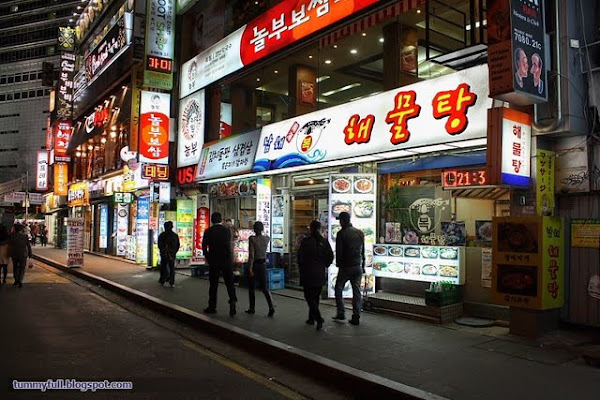Deoksu Palace or Deoksugung Palace served as the King's residence twice during Joseon. The site was originally the home of Prince Wolsan and King Seonjo (1567-1608). They lived here temporary after returning to the capital following the withdrawal of Japanese forces in 1593. Calling it the "temporary palace in Jeongneung-Jong", he resided here because all the main palace compounds had been destroyed during the war. His successor; Prince Gwanghae (1608-1623), renamed it Gyeongun Palace after making the newly rebuilt Changdeok Palace his main residence.
Gyeongun Palace was used as a royal residence again in late Joseon when Goyong (1863-1907) moved here in 1897. Back then, the Joseon state was proclaimed as an "empire" and the ruler began offering rituals at the Altar of Heaven (where Chosun Hotel now stands). The palace halls were rebuilt and the compound was expended to some three times its present size.
However, Gojong was forced to hand the throne over to his son who became Emperor Sunjong in 1907. Emperor Sunjong moved into Changdeok Palace and bestowed the title of Deoksu (virtue and long life) on his father, wishing him a long life. The compound came to be called Deoksu Palace and the former emperor remained here until his death in 1919. The palace compound at that time was some 3 times larger than it is today, encompassing the whole area around the present city hall, Seoul Plaza and Jeong-dong area.
With the onslaught of foreign diplomats and missionaries in Jeong-dong area, some Western-style buildings also appeared inside Deoksu Palace. Built in 1900, Jeonggwan-heon is one of the first European architectural structures to appear on Korean palace grounds. Gojong commissioned a Russian architect to build it.
Deoksu Palace still boast several historic structures and the grounds and nearby areas are very popular for the visitors for the beauty and tranquillity.
* content from Deoksu Palace leaflet.


As I walk from City Hall station to Deoksu Palace, I saw a bunch of people sleeping on the road side. I am not sure what cause they are fighting for.

Deoksu Palace from outside.

Deoksu Palace guard.

Me with the guards.


Colour changing leaves when entering the palace compound.


National Museum of Art in Deoksu Palace compound.


The surrounding in Deoksu Palace.

One of the halls in Deoksu Palace.

The celling design of the hall.

The stone look like tomb stone.
Coordinate/GPS: 37.565577,126.976783
Admission: 1000 Won ~ 0.90 USD for adult and 500 Won for children. Combination ticket (10,000 Won) which includes admission to other places (Gyeongbok Palace, Changdeok Palace (the secret garden included), Changgyeong Palace, Deoksu Palace and Jongmyo Shrine).
Opening hours: 9.00am until 9.00pm.
Subway station: City Hall station (Line 1, Exit 2 or Line 2, Exit 12).
There is also guided tours available in English, Korean, Japanese & Chinese.




















































